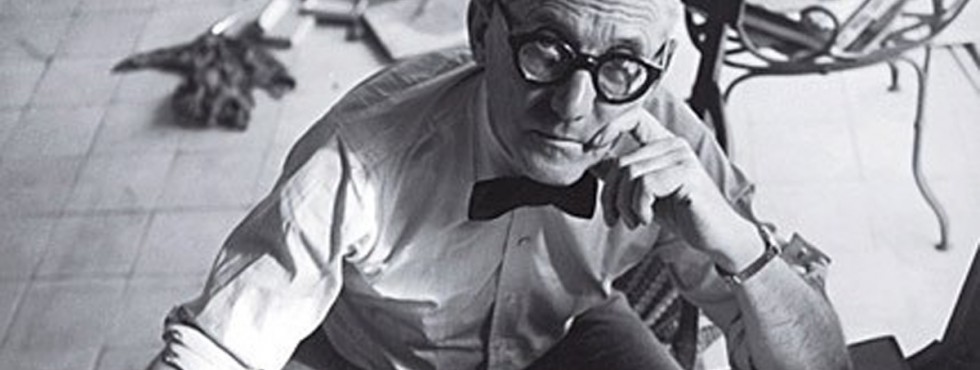Le Corbusier
Le Corbusier and his pack-donkey.
Le Corbusier was very adept at putting things simply and the pack-donkey symbolises his disgust of unenlightened humans, especially those who frustrated his plans to modernise.
Pack-donkeys come up a few times in his writings, but by and large he blames them for the meandering and disorderly paths along which our villages, towns and cities grew up.
Far better he says, to have straight lines, because “Man walks in a straight line because he has a goal and knows where he is going; he has made up his mind to reach some particular place and goes straight to it.The pack-donkey meanders along, meditates a little in his scatter-brained and distracted fashion, he zigzags in order to avoid the larger stones, or to ease the climb, or to gain a little shade; he takes the line of least resistance. But man governs he feelings by his reason; he keeps his feelings and instincts in check, subordinating them to the aim he has in view. He rules the brute creation by his intelligence. His intelligence formulates laws which are the product of experience. His experience is born of work; man works in order that he not perish. In order (for) that production to be possible, a line of conduct is essential, the laws of experience must be obeyed. Man must consider the result in advance. But the pack-donkey thinks of nothing at all, except what will save him trouble.” Le Corbusier, The City of Tomorrow.
This does seem to be a simplistic concept.
In the first place it is unlikely that our roads and streets were formed by pack-donkeys, far more likely to be the roaming predators of pre-history.
Pack-donkeys would be driven, or lead, by men on existing paths.
In any event Le Corbusier seems to be inhabiting a two dimensional world without obstructions, or gravity.
Anyone who has walked from A to B will know that it is more energy efficient, and pleasurable, to accommodate the terrain rather than forge a straight line.
